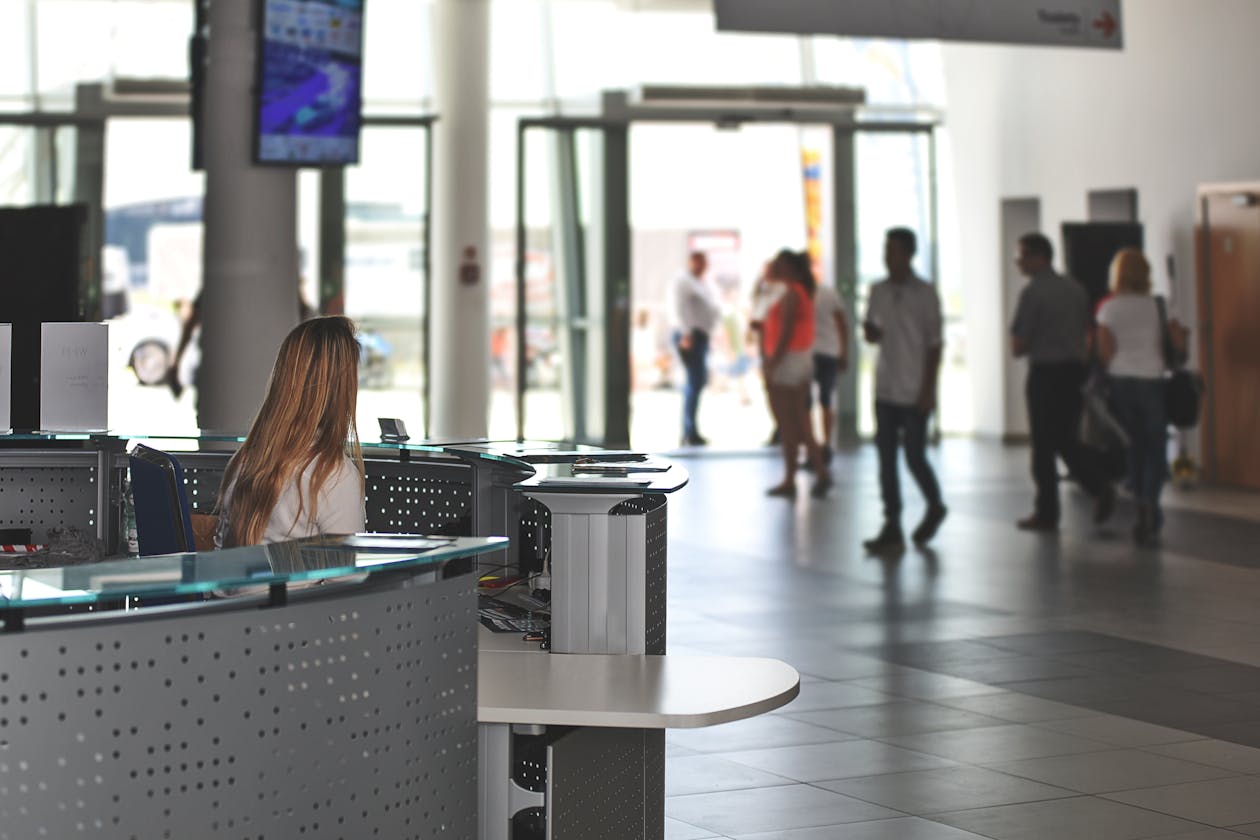As a hotel revenue generating specialist at Emersion Wellness, I’ve witnessed firsthand the profound impact that thoughtful exterior design can have on a hotel’s bottom line. While often overlooked, small hotel exterior design ideas are critical in attracting guests, enhancing their overall experience, and ultimately driving revenue. The right design choices can create a visually appealing, welcoming atmosphere that encourages bookings and ensures guests return again and again. This guide will explore six powerful trends in small hotel exterior design that can help boost bookings and revenue, supported by real-life examples, statistics, and expert insights.
Critical Takeaways:
- Thoughtful exterior design can dramatically enhance guest experience, making them more likely to return.
- Sustainable practices in exterior design appeal to eco-conscious travelers, driving occupancy rates.
- Leveraging local culture in exterior design creates a unique, memorable experience, increasing guest loyalty.
- Smart use of landscaping and lighting can significantly enhance both safety and aesthetic appeal.
- Outdoor amenities like gardens, patios, and dining areas increase guest satisfaction and contribute to higher revenue.
- Smart design choices improve overall hotel revenue and operational efficiency by integrating technology and sustainability.
1. Embrace Sustainable Small Hotel Exterior Design Ideas
Sustainability is no longer just a buzzword; it’s a significant driver of both guest loyalty and hotel profitability. Today’s travelers are increasingly eco-conscious, and they actively seek accommodations that align with their values. By incorporating sustainable materials and practices into your small hotel’s exterior design, you not only reduce your environmental impact but also appeal to this growing demographic.
Eco-Friendly Materials and Practices
Reclaimed wood, recycled metal, and natural stone are just a few examples of sustainable materials that can reduce your environmental footprint while enhancing your hotel’s appeal. Moreover, integrating green roofing, solar panels, and rainwater harvesting systems allows your hotel to operate more efficiently and sustainably, providing long-term savings on energy costs. The Proximity Hotel in Greensboro, North Carolina, stands as a testament to the benefits of sustainable design. By using 100 solar panels and recycled materials, it became the first hotel in America to receive LEED Platinum certification, boosting both its reputation and occupancy rates.
Native Landscaping
Opting for native plants in your hotel’s landscaping not only reduces water usage but also creates a natural, inviting environment that resonates with local ecosystems. Native plants are low-maintenance and more resistant to pests, reducing upkeep costs. The Bardessono Hotel in Napa Valley showcases how extensive native landscaping can offer guests a peaceful retreat while reinforcing the hotel’s commitment to sustainability. The garden areas are a key attraction that contributes to the property’s success, proving that well-planned landscaping can increase both guest satisfaction and revenue.
Energy-Efficient Lighting
Energy-efficient lighting solutions, such as LED lights and solar-powered fixtures, can lower electricity costs while enhancing the ambiance of your hotel’s exterior. Proper lighting is crucial to safety and can be strategically used to highlight architectural features, improving the guest experience. The Hutton Hotel in Nashville, Tennessee, is a prime example of how energy-efficient lighting can reduce operational costs and create a warm, inviting atmosphere that enhances the guest experience.
2. Highlight Local Culture and Art in Your Hotel’s Exterior Design
Incorporating local culture into your hotel’s exterior design not only creates a memorable guest experience but also enhances your hotel’s uniqueness. Travelers are drawn to accommodations that allow them to connect with the local culture and atmosphere, which can result in higher occupancy rates and more frequent bookings.
Incorporate Local Art
Displaying local art is one of the most powerful ways to integrate the surrounding culture into your hotel’s design. Murals, sculptures, and other art forms can beautify your property and make it stand out in the eyes of your guests. The Hotel Indigo chain is known for this approach, showcasing local art in every property. These installations connect guests with the neighborhood’s history and culture, providing a one-of-a-kind atmosphere that encourages them to return.
Architectural Styles That Reflect Local Culture
Whether you choose to preserve historic elements or offer a modern interpretation of traditional designs, the architecture of your hotel plays a significant role in how guests experience their surroundings. By reflecting the local culture in your hotel’s design, you create a sense of place that appeals to travelers seeking an immersive experience. The Raffles Hotel in Singapore is an excellent example, blending colonial architecture with modern luxury. This combination attracts guests who appreciate cultural immersion while enjoying the comfort of modern amenities.
Cultural Events and Festivals
Designing outdoor spaces that can host local cultural events can increase foot traffic and exposure for your hotel. Whether it’s outdoor stages, plazas, or gardens, creating an environment for community gatherings, performances, or celebrations can significantly boost your hotel’s visibility. The Fairmont Le Château Frontenac in Quebec City offers a perfect example of this trend by hosting cultural events in its historic courtyard. This attracts locals and tourists alike, driving up occupancy rates and revenue.
3. Optimize Landscaping and Outdoor Spaces for Guest Engagement
Investing in well-designed outdoor spaces can significantly increase both guest satisfaction and hotel revenue. Beautiful gardens, inviting outdoor dining areas, and comfortable recreational spaces create memorable experiences that guests are likely to share, often leading to positive reviews and repeat bookings.
Creating Inviting Garden Areas
Designing relaxing garden areas with seating, water features, and walking paths allows guests to unwind in a peaceful environment. Such spaces are perfect for quiet retreats, outdoor events, and photo opportunities, enhancing the overall experience. For instance, the Gardens at Biltmore Estate in Asheville, North Carolina, offer serene environments for guests to explore, making them a major attraction that contributes to the estate’s success.
Outdoor Dining and Lounges
If your hotel is located in a climate that allows for outdoor activities, creating outdoor dining and lounge areas can enhance the guest experience and drive additional revenue. These spaces allow guests to enjoy meals and drinks in a scenic setting, which encourages them to stay longer and spend more. The NoMad Hotel in Los Angeles exemplifies this trend with its popular rooftop dining and lounge area, which boasts stunning views of the city skyline and attracts both hotel guests and locals.
Poolside and Recreational Areas
Investing in recreational areas such as poolside lounges, cabanas, and sports courts can increase your hotel’s attractiveness and improve guest satisfaction. Amenities like these encourage guests to stay longer and take advantage of your hotel’s offerings. The Fontainebleau Miami Beach’s expansive pool area is a perfect example, with its multiple pools and cabanas creating an inviting atmosphere that draws both locals and tourists.
4. Enhance Safety and Accessibility
When designing the exterior of your hotel, safety and accessibility must be top priorities. Guests need to feel secure while navigating the property, especially at night. Additionally, making your hotel accessible to guests with disabilities not only broadens your potential customer base but also ensures compliance with legal requirements.
Improved Lighting and Signage
Effective lighting and clear signage are essential for safety and guest satisfaction. Adequately lit pathways, entrances, and parking areas help guests feel safe and confident while navigating the hotel. The Hilton Orlando Bonnet Creek is known for its well-lit pathways and parking areas, creating a welcoming and secure environment for guests, especially those arriving late at night.
Accessible Entrances and Pathways
Ensuring that your hotel’s exterior is accessible to everyone, including guests with disabilities, is crucial. Features like ramps, wide pathways, and accessible entrances should be seamlessly integrated into the design. The Hyatt Regency Chicago has invested heavily in making its exterior accessible, allowing all guests to enjoy the property comfortably and without barriers.
Security Measures
Discreet yet effective security measures are necessary to ensure guests feel safe at all times. Surveillance cameras, gated entries, and on-site personnel are common features in hotels that prioritize security. The MGM Grand in Las Vegas utilizes a comprehensive security system to maintain a secure and welcoming environment for all guests, enhancing guest confidence and safety.
5. Leverage Technology and Innovation in Hotel Exterior Design
Modern technology offers significant advantages for both hotel operations and guest experience. By incorporating smart technologies into your hotel’s exterior design, you can increase operational efficiency, enhance security, and improve guest satisfaction, which directly contributes to higher hotel revenue.
Smart Building Technologies
Incorporating intelligent building technologies like automated lighting and heating systems can help reduce energy costs while improving the guest experience. The Aria Resort & Casino in Las Vegas is an industry leader in this regard, with smart building systems that optimize energy use and provide guests with an unparalleled level of comfort.
Interactive Digital Signage
Interactive digital signage is a great way to engage guests and provide them with valuable information about hotel amenities, local attractions, and promotions. The Renaissance New York Midtown Hotel uses digital displays to inform guests about the latest events and offers, which helps drive revenue by encouraging guests to explore more of what the hotel has to offer.
6. Boost Aesthetic Appeal with Unique Design Features
The exterior of your hotel is the first impression guests have, so it’s essential to make it visually appealing. By incorporating unique architectural features, creative color schemes, and decorative elements, you can elevate your hotel’s aesthetic appeal, drawing in more guests and boosting occupancy rates.
Unique Architectural Features
Incorporating distinctive architectural elements, such as creative facades or innovative designs, can make your hotel a landmark in the community. The Marina Bay Sands in Singapore is an example of a hotel with iconic architecture that draws guests from all over the world. Its striking design has made it a global symbol of luxury, helping the hotel maintain a competitive edge.
Harmonious Color Schemes
Selecting the right color scheme for your hotel’s exterior can enhance its visual appeal. The Beverly Hills Hotel is a prime example of how a bold color choice—its signature pink façade—has become synonymous with the brand, making it instantly recognizable and contributing to its iconic status.
Conclusion
Maximizing your hotel’s revenue potential starts with a thoughtful approach to exterior design. By incorporating sustainable practices, celebrating local culture, optimizing outdoor spaces, prioritizing safety, embracing technology, and enhancing aesthetics, you can create an unforgettable guest experience that leads to increased bookings, improved guest loyalty, and higher revenue.
Stay ahead of the curve by leveraging these six powerful exterior design trends, and watch your small hotel thrive in an increasingly competitive hospitality market.




